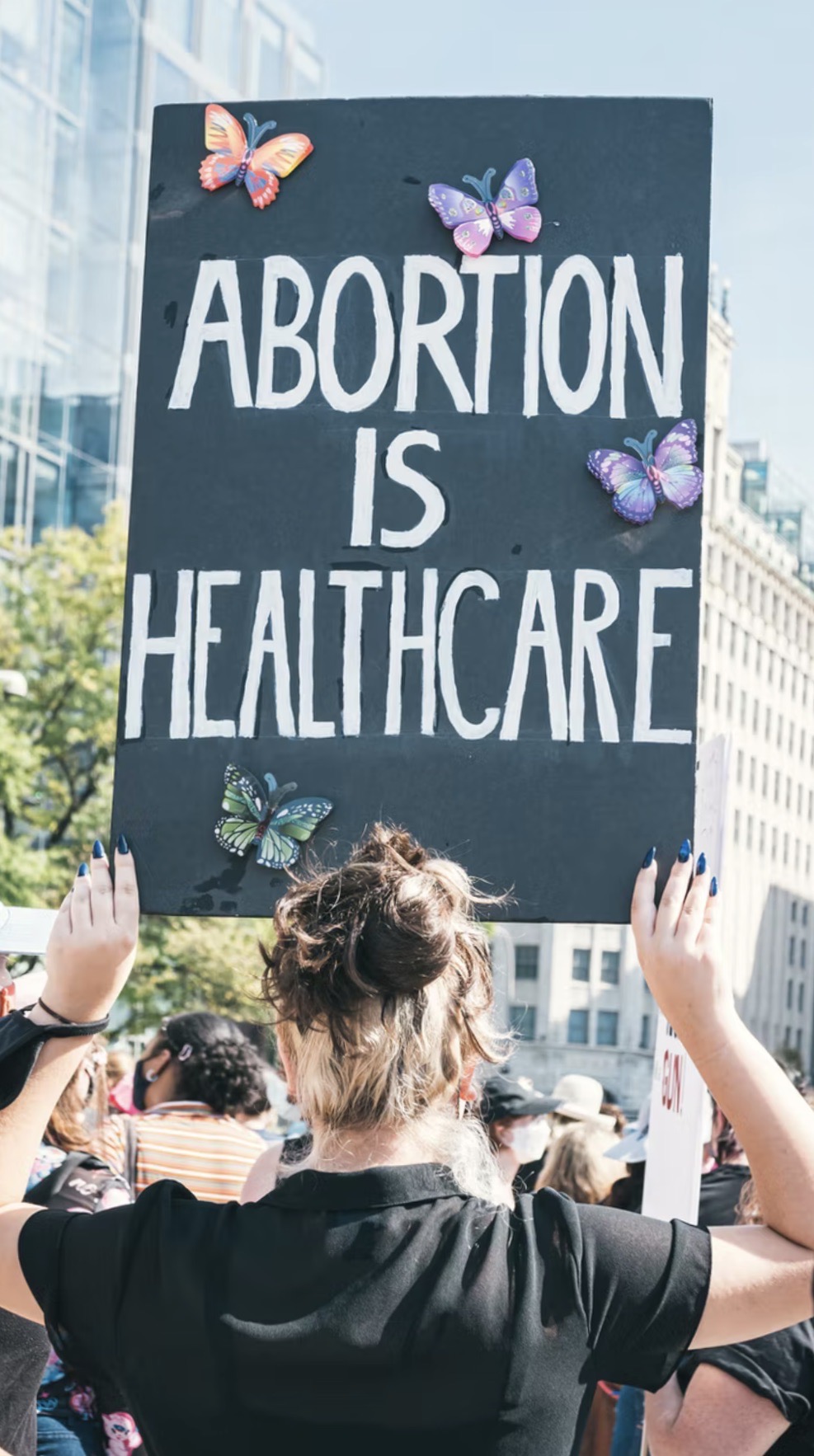 This month's featured author is Lizbeth Guzman. Lizbeth's piece is part of her senior project on women's right to reproductive autonomy. "I want to educate women, preferably youth. I would like to inform them on current reproductive laws, how to practice safe sex, and where to go for further resources."
This month's featured author is Lizbeth Guzman. Lizbeth's piece is part of her senior project on women's right to reproductive autonomy. "I want to educate women, preferably youth. I would like to inform them on current reproductive laws, how to practice safe sex, and where to go for further resources."
Lizbeth also included an anonymous survey in her post to see how much readers know about their reproductive rights. No personal information will be recorded and there are no wrong answers: https://forms.gle/Xm3sURtxahSh6DAK9
- ROE V. WADE: THE CASE - Roe v. Wade is a controversial case that allows women to have a choice over their reproductive health. It started with Norma McCorvey, most commonly referred to as ‘Jane Roe’ who was living in Texas in her early 20’s. Jane wanted to receive an abortion to end an unwanted pregnancy. In Texas, at the time it was only legal to receive an abortion if the woman's life was at risk. Her attorneys during this case was Linda Coffee and Sarah Weddington who were pro-choice. In June 1970, Henry Wade was the prosecuter in the case who would continue to prosecute those who performed abortions. Jane had the baby, like her previous 2 pregnancies, she made an adoption plan as she was not able to care for a child.
- ROE V. WADE: THE HISTORY - In January 1973 the Supreme Court legalized abortion across the country in a 7-2 decision, meaning 7 judges voted to legalize abortion while two voted against it. A woman was able to receive an abortion within the first trimester, about 3 months into the pregnancy. During the second trimester, 3-6 months, the government is able to regulate abortion but not ban them completely. This is because it is said that a woman's right to abortion is protected by the 14th amendment. During the third trimester, (6-9 months) the state could ban abortions to protect a fetus that could survive outside the womb unless the woman’s life was at risk.
- THE SUPREME COURT AND SAFE ABORTION - The Supreme Court legalized abortion in 1973, but it did not ensure safe abortions. In April 2007 a new law was put into place, this was the Partial-Birth Abortion Ban Act of 2003. It was first signed into place in November 2003 by President Bush, however, this act did not allow exceptions for women's health. The act made it a federal crime to take particular steps during a second-trimester (3-6 month) abortion.
The second female Supreme Court justice, Ruth Bader Ginsburg, can be thanked. Ginsburg advocated for gender equality and LGBTQ+ rights during her 27 years on the Supreme Court. Ginsburg said overturning Roe v. Wade would be the ‘worst-case scenario’ for women''. It has been proven that abortions now are much safer than they were in the 1970s. According to Planned Parenthood, in 1965, 17% of deaths due to pregnancy were because of illegal abortions. Now, less than 0.3% who receive an abortion at any period through the pregnancy experience complications. Based on the statistics, abortions have become so common, the procedure is fairly safe. - REPRODUCTIVE PRIVACY ACT OF 2019 - In June of 2019, Rhode Island passed the Reproductive Privacy Act with a vote of 21-17. The main points in the act says that the state cannot:
- Restrict someone from preventing or terminating a pregnancy after fetal viability* This means no one can prohibit someone from trying to prevent or end their pregnancy after fetal viability
- Hinder their decision to continue with the pregnancy after fetal viability (A person cannot try to change a person's decision to continue pregnancy even after fetal viability)
- Restrict a person from terminating a pregnancy after fetal viability to preserve the health or life of the individual (A person can not restrict someone from ending a pregnancy after fetal viability if their health or life is in danger)
*Fetal Viability is when the fetus can live outside of the uterus, usually starting at 24 weeks - RESOURCES: WHERE YOU CAN GO - Below are organizations that offer reproductive health services. Some of these organizations have websites you can visit to learn more.
- Faith Aloud: If you are religious and want someone to talk to about abortion or pregnancy, you can call 1-888-717-5010
- Roman Catholic, Jewish, Unitarian-Universalist, Protestant Christian, and Buddhist. Persons of no particular religious faith are equally welcome to call. www.faithaloud.org
- AbortionFinder: Helps you find an abortion provider near you, you can visit www.abortionfinder.org
- Exhale: If you need someone to talk to process your feelings you can go to www.exhaleprovoice.org or text 749 617--2948
- Planned Parenthood: You can find abortion pills, emergency contraception, and many birth-control options at Planned Parenthood. You can visit www.plannedparenthood.org/health-center to find a health center near you.
- NURX: You can visit www.nurx.com and find emergency contraception, STD testing, birth control, and even acne medication. Select the medication (if applicable, enter your insurance information), a provider will review and write a prescription which will then be discreetly mailed to you.
SURVEY - https://forms.gle/Xm3sURtxahSh6DAK9
Please click the link to take a brief survey. It is anonymous and only the first three questions are required. Please do not let any questions stop you from answering. If at any point you are not comfortable with responding you can always write “i don't know” as the answer.
SOURCES
Barnes, Robert. “Antiabortion Activists at Supreme Court Cite an Unlikely Authority for Overturning Roe v. Wade: Ruth Bader Ginsburg.” The Washington Post, WP Company, 7 Aug. 2021, https://www.washingtonpost.com/politics/courts_law/abortion-roe-v-wade-ruth-bader-ginsburg/2021/08/06/e5156ed2-f6bc-11eb-9068-bf463c8c74de_story.html.
History.com Editors. “Roe v. Wade.” History.com, A&E Television Networks, 27 Mar. 2018, https://www.history.com/topics/womens-rights/roe-v-wade.
“Roe v. Wade: Its History and Impact - Planned Parenthood.” Planned Parenthood, Jan. 2014, https://www.plannedparenthood.org/files/3013/9611/5870/Abortion_Roe_History.pdf.
Stevenson, Richard W. “Bush Signs Ban on a Procedure for Abortions.” The New York Times, The New York Times, 6 Nov. 2003, https://www.nytimes.com/2003/11/06/us/bush-signs-ban-on-a-procedure-for-abortions.html.

